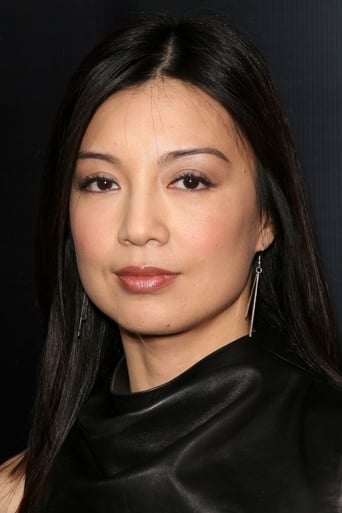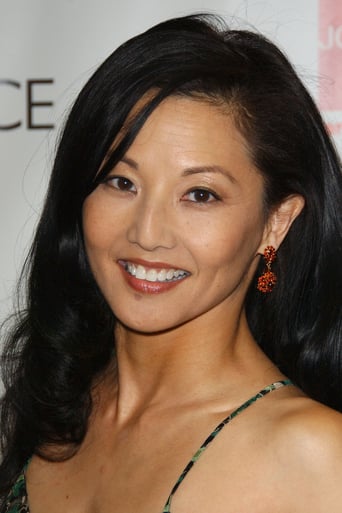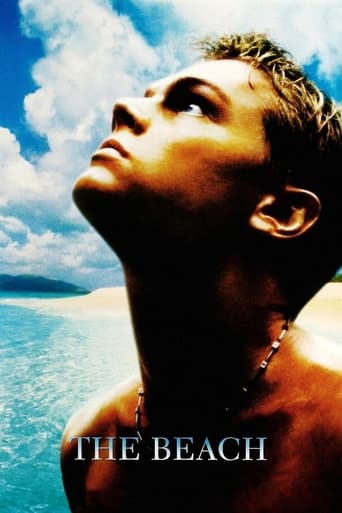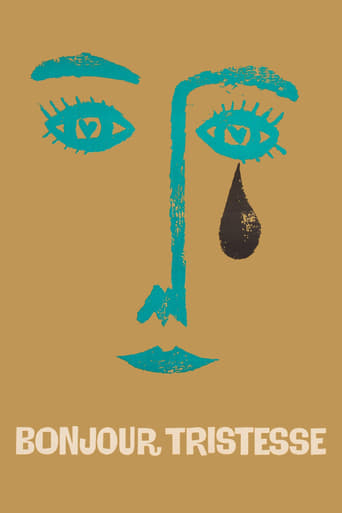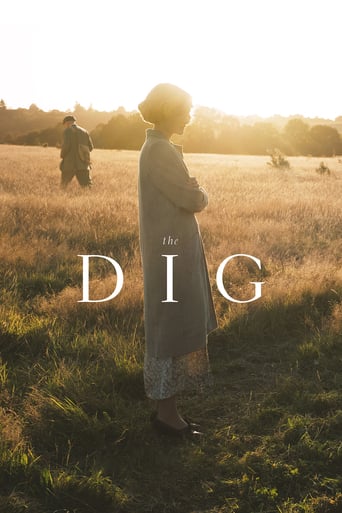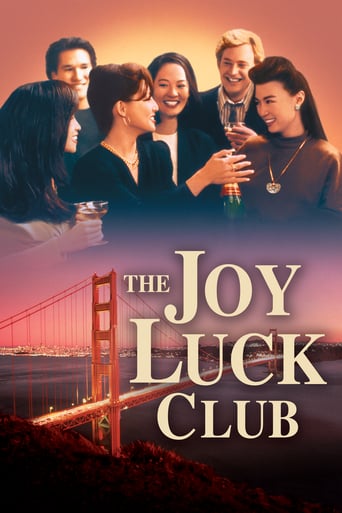
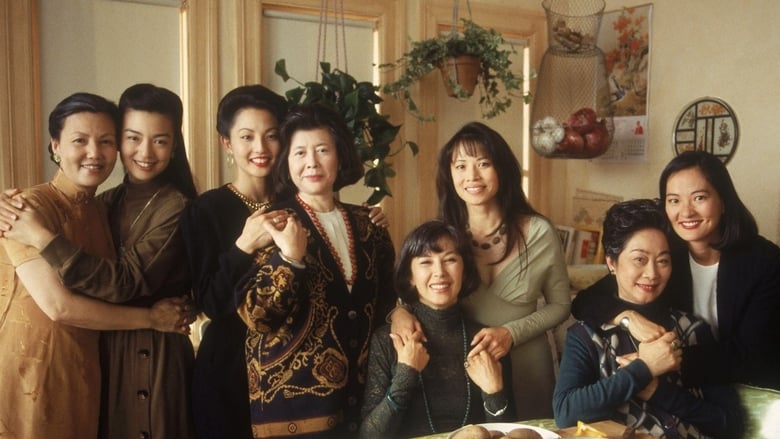
 Watch Now
Watch Now




The Joy Luck Club (1993)
 Watch Now
Watch Now




Through a series of flashbacks, four Chinese women born in America and their respective mothers born in feudal China explore their pasts.
Watch Trailer
Cast


Similar titles
Reviews
Powerful
Must See Movie...
A lot more amusing than I thought it would be.
I wanted to like it more than I actually did... But much of the humor totally escaped me and I walked out only mildly impressed.
The story is classic in San Francisco of Asian women with own daughters. This Is Us show had nailed the past or chronological times same as Joy Luck Club's chronologies times.
I read Amy Tan's novel The Joy Luck Club in high school and on my leisure time, and became one of my favorites. It is a combination of fantastic stories about four young Chinese women learning the walks of life from their mothers, whose life stories of love, hate, sacrifices, honor and war are retold in the novel and powerfully depicted in this movie, which are acted out through a series of flashbacks from the daughters' present day lives to their mothers' past in feudal China.Ming-Na Wen, Tamlyn Tomita, Lauren Tom and Rosalind Chao play the four daughters and each gave a powerful and realistic performance in their respective roles. The same goes with their on-screen mothers, played wonderfully by Kieu Chinh, Tsai Chin, France Nuyen and Lisa Lu. Their mother-daughter and friend-friend chemistry together were inspiring and a joy to watch and experience.This movie made me appreciate my Chinese heritage as it delves upon another's struggles and perseverance through the culture's past, present and future, and explore how one can cement his/her relationship with one's child or parent and learn from each other to better their lives. The scene where Kieu Chieh's character Suyuan flees China from the Japanese occupation, pushing a cart with her newborn twin daughters and a handful of her belongings in it was such a strong scene that it put tears to my eyes. The cart collapsing with her daughters and belongings spilling out furthered the emotion. Then, the following part where Suyuan had to make the difficult decision to leave her daughters behind, knowing she couldn't care for them, and putting some jewelry and a black & white picture of herself with the baby bundle finally sent me crying my eyes out (I have never had this much years in any of the movies I've seen).Kudos to Amy Tan for writing such a powerful novel and kudos to Director Wayne Wang for directing such a beautiful movie and cast. I enjoyed every minute of it and I highly recommend it to anyone.Grade A
I was assigned to read The Joy Luck Club for this year's book report, but I was informed by several people that The Joy Luck Club was a movie, too! Not only that, but it was a classic, apparently! I can't believe I didn't know that. Anyway, I decided to give it a try. Like a prologue before I start with the book itself.I didn't like the biases that it gave to all of the daughter's husbands. It was like, somehow it showed that all Chinese men were cruel. I'm sure that not EVERY man in China is like that (or are they?)! That biased opinion of men threw me off. I also got confused with all the Chinese names and the many characters, though it was easy to understand the plot of the movie.What I liked about this movie was the hope that it gave. Friendships can last. I'm not sure if I've found friends that would stick with me until I'm old and gray. I can only hope so. This movie shows that it is possible for it to happen. The relationships shown between mothers and daughters were done splendidly. The last scene with June and her mother was sad. Granted, I didn't really feel any emotion, but I could tell somehow that it was supposed to be a heartbreaking moment.Everyone was also interconnected, somehow. It was like watching those romance films like Love Actually or Valentine's Day. The only difference was that the main topic of The Joy Luck Club was about family (specifically mother-daughter) love.I was expecting a lot, due to all the reviews that I've seen/heard. From friends to parents to adults to online reviews-- everyone said it was a great movie and it made them cry! I was wondering why I wasn't crying even in the last 5 minutes of the film. Either something's wrong with me or it's really just the movie. Or maybe it was just the time of the day. I felt that I wasn't concentrating much on it. Maybe next time.I hope that the book catches my attention more.
The story comes after a death and a reunion that bring the past back in all of its undiluted passion, and shows how the present, too, is made, how children who think they are worlds apart are inextricably influenced by the lives of their parents. Wayne Wang's touching film, based on Amy Tan's novel, is about four women, who were born in China and later came to America, and their daughters. Among these eight women mingle countless friends and relatives, to the mise-en-scene's maximum scenery capacity, in peripheral branches of life. Actually, those scenes are the biggest weaknesses of the film, as their interjecting party jest is so transparently scripted that we want only the bottom line of the scenes. But what is about to be dissolved are the beginnings of the women, the stories of how they were born and grew up in a time and culture so far apart from the one in which they live now.The club of the title is a circle of elderly Chinese ladies who meet weekly to play mah jong, and trade stories of their families and grandchildren. All have made ruinous paths from pre- revolutionary China to the privileged homes in San Francisco where they meet. But those old days are not frequently talked about, and often the entire reality of them is not revealed.In a framework of flashbacks, the secrets and stories of all four of the "aunties" are unraveled. We see that the China of the 1930s and 1940s, before the Revolution, was an inconceivably dissimilar world than it is today. Women were not considered too much. Those with resilient spirits and wills were regarded even less than the impressionable, submissive ones. Life was worthless, no more than in wartime. A mother's ability to love her children was doubted. In plenty of instances, all-consuming dilemmas from those hard days still find their echoes in succeeding generations: The potent reality of Amy Tan's story is the lack of understanding between cultures that make the capability of the mothers to identify with their westernized daughters rely on things that have never been clearly vocalized.How, in one instance, could the narrator's mother have told of deserting her first-born twin girls by the roadside? Her mother, ill and emaciated, was certain she should die, and believed her girls would have a better likelihood of living if they were not compromised by the "bad luck" of a deceased mother. Other stories are just as, if not more, agonizing to Americanized ears. There is the auntie who becomes the fourth wife of a wealthy man, and when she gives birth to the son he wished for so much, the child is taken from her by the second wife.In America, the mothers find it difficult to get their minds around the paths their daughters are taking. Some marry whites, who have deplorable etiquette. They move out of the old neighborhood into houses that seem too cutting-edge and frigid. One daughter gives up on ever pleasing her mother, who carps on everything she does.This movie was produced by Oliver Stone, who himself at one time was an astute and scrappy filmmaker who turned out films with cross-cultural themes like this one, such as his Vietnam trilogy, and Joy Luck's director Wang leaves us longing for the rawness of those films, but he captures Tan's story and keeps it pure within his medium. Her story is as respects Chinese and Chinese-American characters, but their stories are all-inclusive. Anyone, everyone, can relate to how the expectations of one generation can become both the obstructions and the awakenings of the next.


